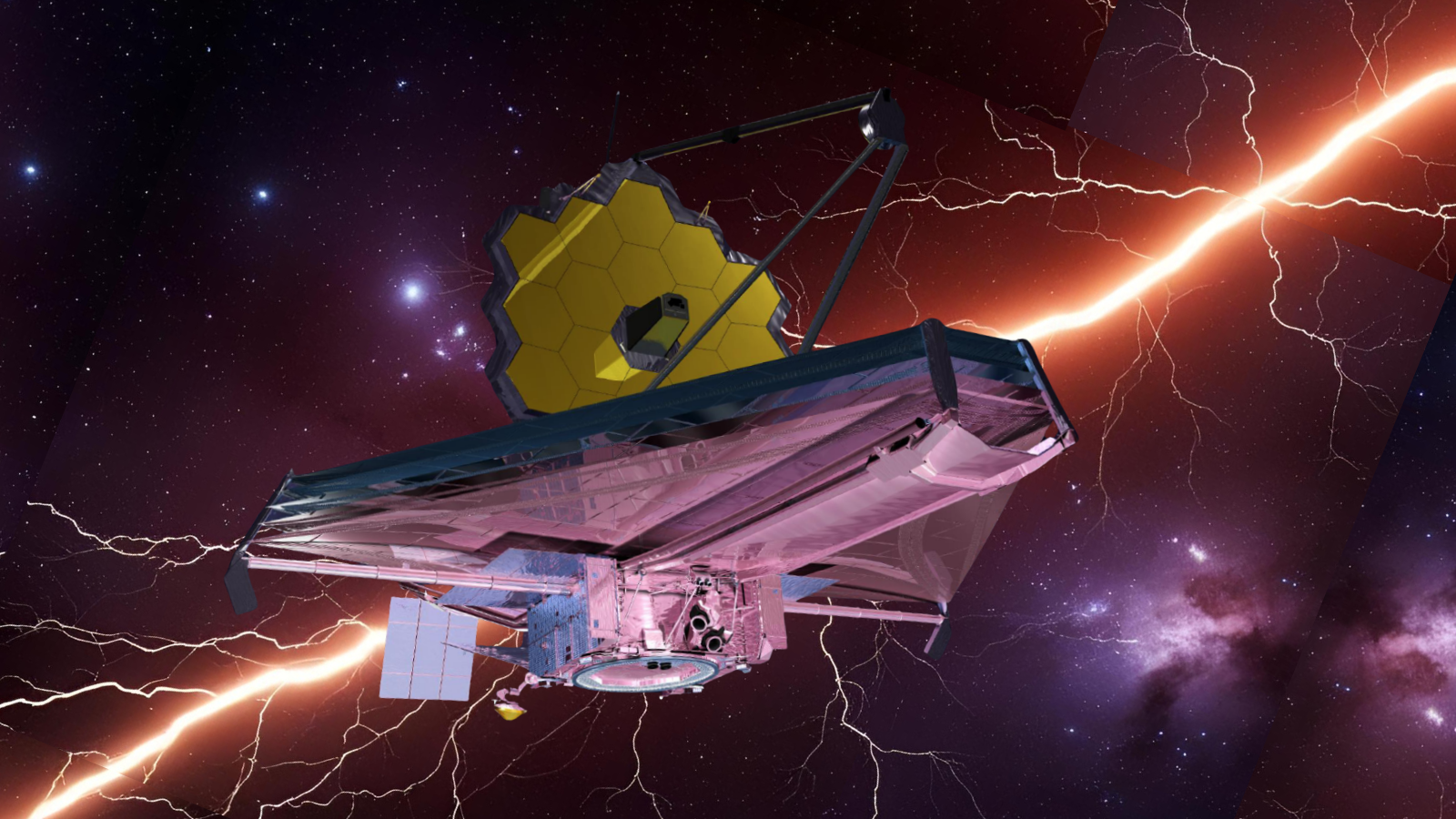James Webb Space Telescope lands on 'The Daily Show with Trevor Noah'
"We're seeing something from 13 billion years ago ... I'm sorry, what?"

You can see life, the universe and everything explode Trevor Noah's horizons as he learns about NASA's newest deep-space telescope in front of a live audience.
The comedian sat down with Gregory Robinson, director of the James Webb Space Telescope program, during Comedy Central's "The Daily Show With Trevor Noah" Tuesday (July 19). Noah said he's still trying to catch up from the mind-blowing image release of Webb's operational work days ago, showing everything from faraway galaxies to a "cliff" of dust and gas.
"We're seeing something from 13 billion years ago," Noah said of a selection of the new imagery, shaking his head in disbelief. "I'm sorry, what? What does that even mean?"
Live updates: NASA's James Webb Space Telescope mission
Related: How the James Webb Space Telescope works in pictures
"Well, sometimes I say 'what' as well," admitted Robinson, who has been with NASA almost continuously since 1989. He added that what we're seeing is light traveling from far away, at 186,000 miles per second (nearly 670,000 kph). The events Webb are capturing, he said, "are just reaching us now. It's time-distance travel of light."
Noah, trying to manipulate time travel like Doctor Strange, immediately seized on some interesting implications. "What do we use this information for? Will it tell us that the aliens left [for Earth] and are already here? Does it tell us where we're going to go after we destroy Earth?"
Robinson said Webb's mission is to answer some basic astronomy questions, of which scientists surprisingly know little. "Where do we come from? How do we fit into this universe? Are we alone, is another one that we're looking for. It helps inform of us of how we fit into the universe."
Breaking space news, the latest updates on rocket launches, skywatching events and more!
The conversation also covered Robinson's own story, which started decades ago in rural Virginia, where his parents were sharecroppers. As one of their 11 children, he grew up among segregation for Blacks during the Jim Crow era (which you can see portrayed in the movies in the 2016 movie "Hidden Figures" about Black female NASA engineers, based on a best-selling book).
Noah added that despite these obstacles, Robinson was the person NASA called upon in 2018 when Webb was far behind schedule and over budget. "It was failing," Noah said, "and yet they called you. They were like, 'We need you to do this,' and you did it.'"
Robinson credited teachers at his segregated school with planting the seeds of his success, saying they often were highly credentialed even as it was difficult for Blacks to get jobs in industry during that time. "They nurtured us. They cared about us. So my beginnings were very strong."
As for Webb's difficult journey, Robinson added that much of the hard work was done before he was tasked to step in 4.5 years ago. Alongside NASA, industrial and international partners helped Webb launch flawlessly on Dec. 25, 2021, and shepherd it through the six-month commissioning period.
"This team is an incredibly, incredibly smart team. Smarts is never a shortage at NASA, and certainly not for this team," Robinson said.
Follow Elizabeth Howell on Twitter @howellspace. Follow us on Twitter @Spacedotcom and on Facebook.

Elizabeth Howell (she/her), Ph.D., was a staff writer in the spaceflight channel between 2022 and 2024 specializing in Canadian space news. She was contributing writer for Space.com for 10 years from 2012 to 2024. Elizabeth's reporting includes multiple exclusives with the White House, leading world coverage about a lost-and-found space tomato on the International Space Station, witnessing five human spaceflight launches on two continents, flying parabolic, working inside a spacesuit, and participating in a simulated Mars mission. Her latest book, "Why Am I Taller?" (ECW Press, 2022) is co-written with astronaut Dave Williams.
